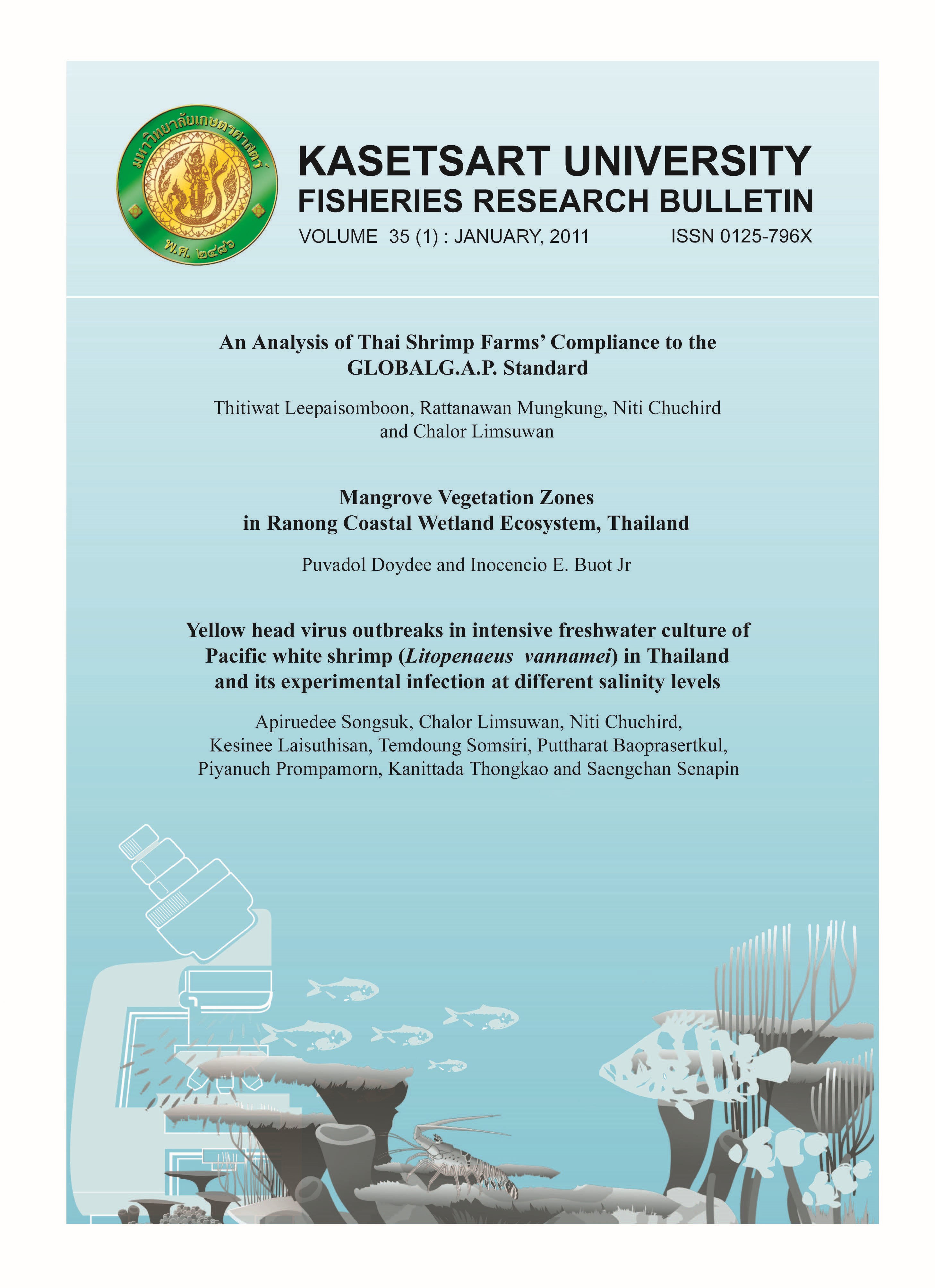Yellow Head Virus Outbreaks in Intensive Freshwater Culture of Pacific White Shrimp (Litopenaeus vannamei) in Thailand and its Experimental Infection at Different Salinity Levels
Main Article Content
Abstract
Litopenaeus vannamei (5-10 g) with gross signs of YHV disease (faded overall body, yellowish cephalothorax and high mortality) were collected in 15 farms located in Ratchaburi province, central Thailand during June 2009 to January 2010 and analysed for YHV infection using RT-PCR. Results revealed YHV infection in those coming from 12 of the 15 farms , while the samples from the remaining 3 farms gave negative results for YHV infection. Analysis of RT-PCR amplicons from infected shrimp revealed the presence of YHV type 1-b (alone). Histopathological study of infected shrimp showed severe necrosis with prominent nuclear pyknosis and karyorrhexis in the gills, lymphoid organ, hepatopancreas and walls of the stomach. The immunoreactivity with YHV p20 nucleocapsid protein was strong in the tissues of the said body parts. Experimental injection and feeding at different salinity levels were performed to determine the severity of YHV infection in L. vannamei. Three hundred normal (Specific Pathogen Free) white shrimp (8-10g) were transported from the source farm to the Aquaculture Business Research Center laboratory at Kasetsart University and acclimated at the salinity of 5, 15 and 30 practical salinity unit (psu) (100 shrimp for each treatment) for 10 days before the experiment. Thirty shrimp from each salinity were infected by intramuscular injection at the fifth abdominal segment with the extracted filtrate from gills and swimming legs of YHV-infected shrimp, through 450 nm at 0.1 ml. Infected shrimp from each salinity were placed in three aquaria with 10 shrimp per aquarium. In the second experiment, YHV infected shrimp were cut into several pieces and fed to 90 normal shrimp for one meal (30 shrimp from each salinity) before placing into aquaria (10 shrimp per aquaria). Mortality was observed throughout the 40 days experimental period. Cumulative mortality was also recorded and compared among the treatment groups. Some moribund shrimp were preserved in 80% ethanol for RT-PCR assay. Results showed that moribund shrimp developed yellowish coloration of the cephalothorax and gills. The first mortality was observed within 24 hours, followed by severe mortality until day 6. This result indicated that mortality in low salinity water (5 psu) was significantly faster than those at 15 and 30 psu groups. At 30 psu, the injected shrimp could survive more than 20 days after injection. Results from the feeding experiment demonstrated that the first mortality was observed after 48 hours. Similar results were observed in which mortality in the low salinity group (5 psu) was faster than those at 15 and 30 psu groups. At 30 psu, the first shrimp died after 72 hours and one shrimp survived until day 40. RT-PCR assay confirmed that dead shrimp from the two experiments were severely infected by YHV. However, slight infection was observed in the only surviving shrimp.

